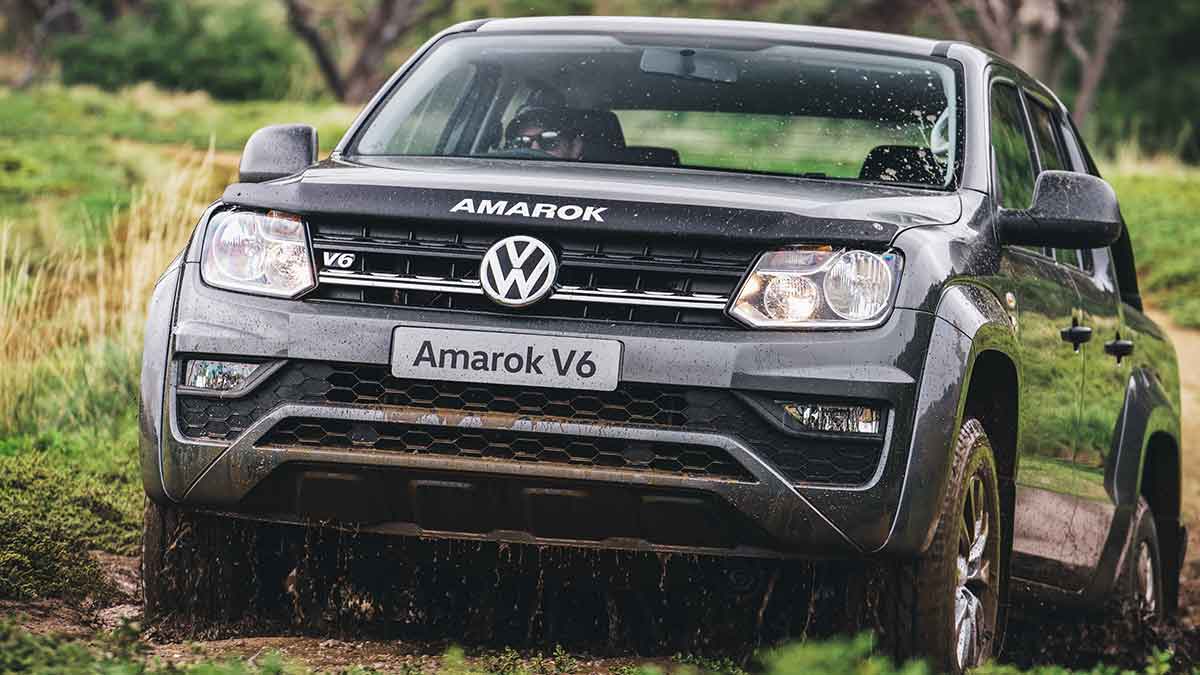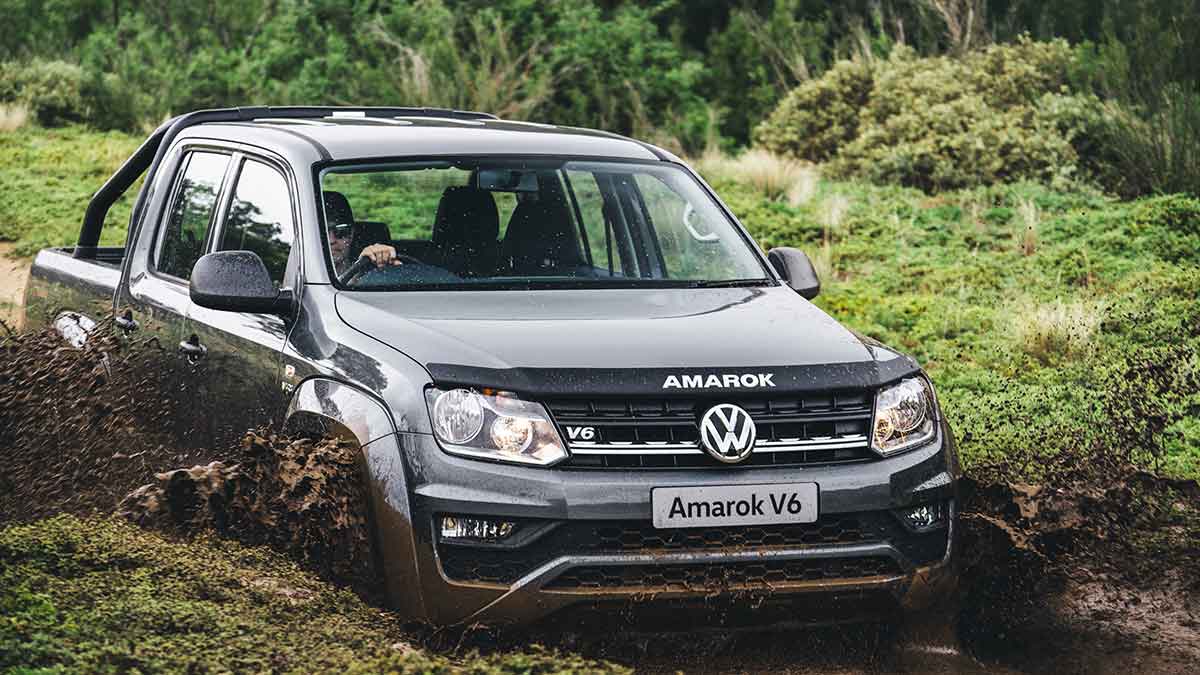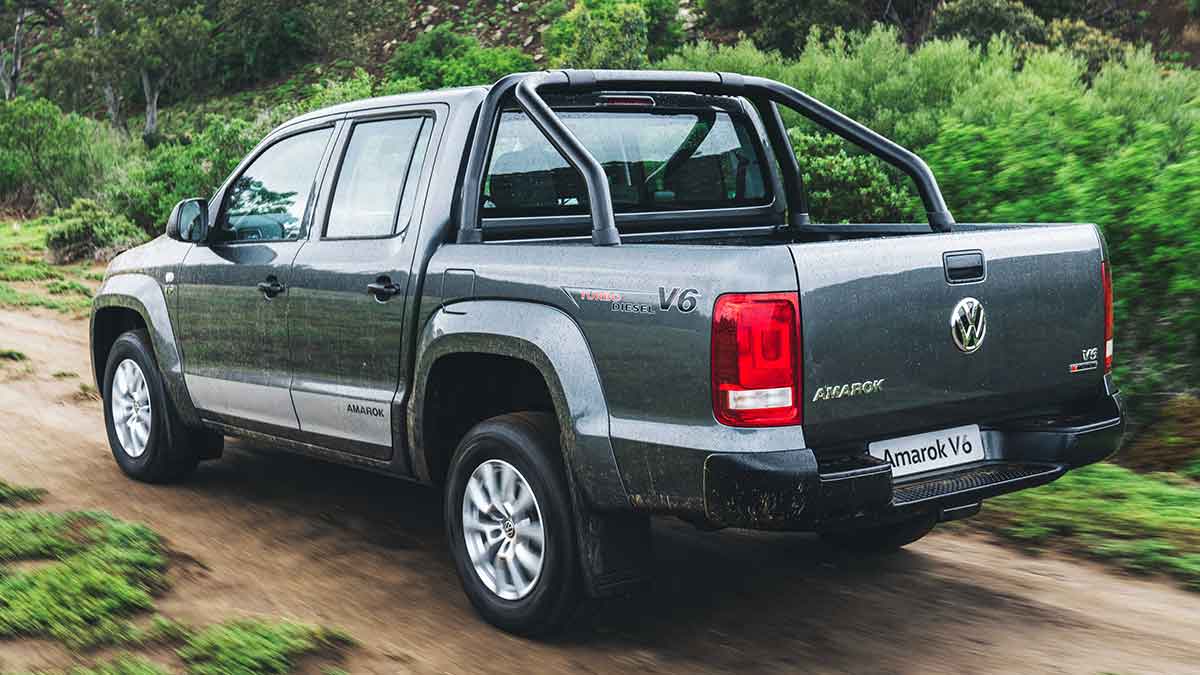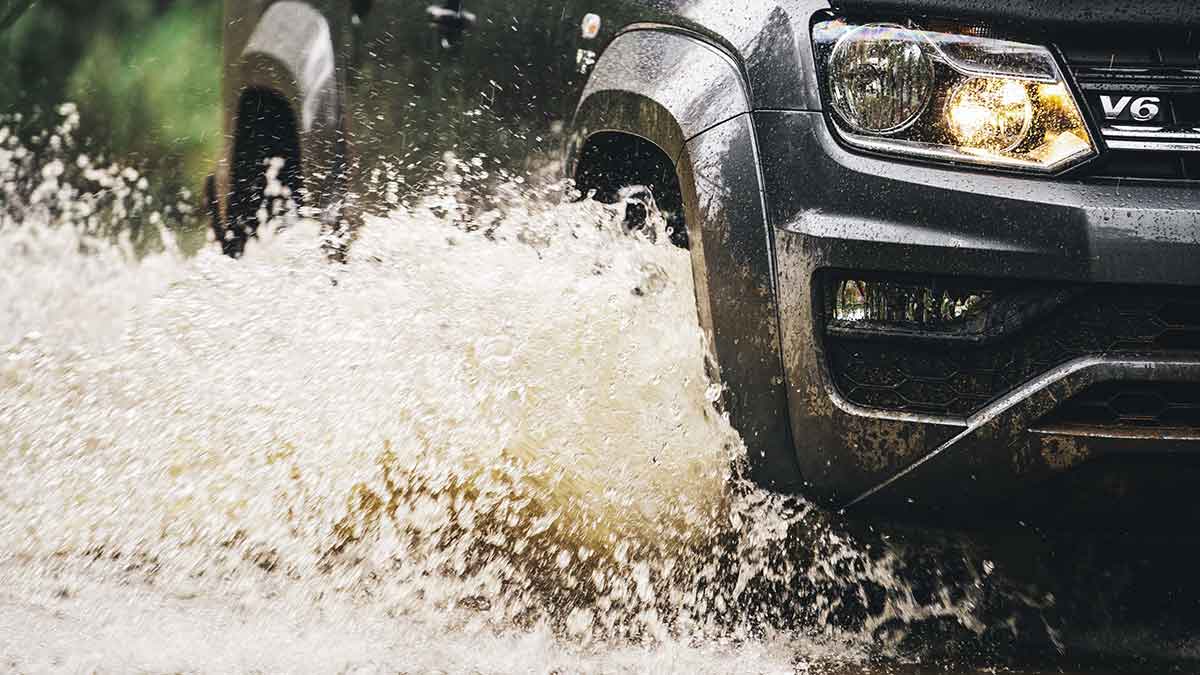The ninth-generation Toyota HiLux has arrived, bringing with it a futuristic forward exterior design, more safety and tech and the same rugged capability owners love. Will the updates tempt private buyers away from the Ford Ranger or are they just enough to keep fleets onside?
First drive: 2019 Volkswagen Amarok V6 manual launch review

Tim Nicholson takes Volkswagen’s Amarok V6 manual off road and gets a little muddy.
Volkswagen’s Amarok has been around since 2011, receiving regular updates and special editions to keep it fresh against its rivals. While the four-cylinder diesel version has always had a manual gearbox, the powerful V6 turbo-diesel variants have only been sold with an eight-speed automatic – until now. VW Australia says its customers have been asking for a manual V6 Amarok and it has just hit local showrooms. The six-speed manual is initially only available in the entry-level V6 TDI500 Core, but it could be offered on higher-grade variants down the track if there is sufficient demand.
The Amarok has grown in popularity later in its model life, particularly after the launch of the V6 in late 2016. In fact, VW has sold a whopping 70,000 Amaroks in Australia, which is impressive given it’s the brand’s first attempt at a pick-up. A replacement is likely to surface in 2022-23 and it will be a joint development with Ford.
In this article
What do you get for the price?
The Amarok V6 Core manual is priced at $49,590 before on-road costs, which is $3000 less than the same variant with an eight-speed auto ($52,590). Apart from the soon-to-depart Benz X-Class, the Amarok is the only 4x4 one-tonne V6 on offer in Australia, but it lines up on price against the Ford Ranger XLS and Toyota HiLux SR.
The manual Amarok Core gains a part-time four-wheel-drive system, which differs from the permanent 4x4 setup in the automatic version. It also has a rear mechanical differential lock and a low-range transfer case, along with a hill-descent assist system that guides vehicles on a steep descent by limiting the speed through active brake intervention. You can increase or reduce the speed using the accelerator or brake but only between 2kmh or 30kmh.
Aside from the new manual gearbox, it’s business as usual for the Amarok Core, with standard gear including reversing camera, 17-inch alloy wheels, leather-wrapped multi-function steering wheel, cloth seats, front fog lights, App connect and semi-automatic air-conditioning.
How safe is it?
All 4x4 dual-cab Amaroks carry a five-star ANCAP crash safety rating. The Amarok is showing its age when it comes to safety gear. It’s missing the latest tech such as blind-spot monitoring and lane-departure warning, as well as autonomous emergency braking. It does, however, have dual front airbags and front-side airbags.
What’s it like inside?
As the entry to the Amarok V6 range, the Core feels more stripped-out than pricier model grades like the Highline, but it still beats many of its rivals for interior quality and comfort. It has the logical dash layout of almost every other Volkswagen model and brings together hardy materials you’d expect of a tradie special, with a more premium look and feel than other workhorses.
What’s under the bonnet?
The 3.0-litre V6 turbo-diesel engine in the TDI500 Core pumps out 165kW of power and 500Nm of torque, which is 50Nm less than auto. It’s paired with a six-speed manual gearbox or the eight-speed auto as an option and comes standard with VW’s 4Motion all-wheel-drive system. Buyers who don’t need the grunt of the V6 can still choose the 132kW/400Nm four-cylinder turbo-diesel engine for $5000 less. A 420Nm version of the four-pot is $2000 less.
With the drop in torque compared with the auto, the Amarok TDI500 manual loses 500 kilograms in towing capacity, bringing it to 3000 kilograms. Payload, however, is up slightly from 989 kilograms to 1004 kilograms.
How does it drive?
A brief drive from Melbourne airport to Werribee was a good reminder of why the Amarok is so popular. Even unladen, the ride is smooth and the performance from the V6 engine is effortless. The new six-speed box is a slick shifter too – it’s nowhere near as clunky and agricultural as many of its rivals. It steers well for a big ute and is more car-like than many of its contemporaries. Even after nearly a decade on the market, it’s still one of the best driving utes money can buy.
But what many people don’t realise is that the Amarok is a capable off-roader. We tested the manual V6 Core across three stages at the Melbourne 4x4 Training and Proving Ground. Engaging the centre and rear differentials at different stages and using the Offroad mode, the Amarok kept its composure. On the seriously muddy sections, the Offroad mode still allows for some fun sliding while retaining control. The hill-descent assist worked flawlessly on a terrifyingly steep descent.
Should I buy one?
Anyone who says the Amarok is not a serious off-roader might be surprised to see just how capable it is. Personal preference will dictate whether you choose the manual or the auto, but its on-road manners are as good as they’ve always been, keeping the Amarok at the top of the pick-up segment.






